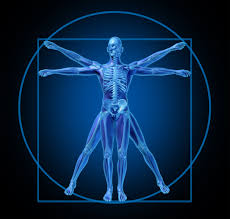Unlock the Power of Your Body’s Natural Signals
Have you ever felt like your body was trying to communicate something, but you couldn’t quite figure out what it meant? That’s where kinesiology might come in. Kinesiology is more than just a technique; it’s a holistic approach to understanding and improving your physical, mental, and emotional well-being. This beginner-friendly guide will introduce you to the concepts, benefits, and techniques of kinesiology, helping you decide if this innovative practice is right for you.
By the end of this blog, you’ll know what kinesiology is, where it comes from, its unique principles, and how it can transform lives.
What is Kinesiology?
Definition and Core Concepts
Kinesiology, at its core, is the science of human movement and energy flow. While it originally evolved as a discipline to study biomechanics and muscle function, it has since developed into a holistic health practice. Modern kinesiology combines principles from Western science, such as anatomy and physiology, with concepts from Eastern practices like energy flow and balance.
What makes kinesiology so unique is its focus on the mind-body connection. Practitioners view the body as an interconnected system, working to identify and correct imbalances that might be contributing to physical pain, emotional distress, or stress.
Why Kinesiology Matters
Unlike traditional approaches that focus exclusively on symptoms, kinesiology addresses the root causes of imbalances. Whether you are dealing with chronic fatigue, mental overwhelm, or physical discomfort, kinesiology offers an individualised, non-invasive solution tailored to your needs.
History and Principles of Kinesiology
1. A Journey Through Time
The roots of kinesiology can be traced back to Traditional Chinese Medicine (TCM), which has relied on the concept of Chi, or life energy, for thousands of years. Eastern modalities like acupuncture and meridian therapy have long emphasised balancing energy flow to maintain health.
Western kinesiology as we know it began in the 1960s, thanks to Dr. George Goodheart, a chiropractor who developed Applied Kinesiology. He introduced muscle testing as a way to diagnose and treat physical imbalances based on a person’s muscle responses.
2. Foundational Principles
At its foundation, kinesiology is based on a few key principles:
- Mind-Body Connection: Our physical, emotional, and mental states are deeply intertwined. Imbalances or stress in one area impact the others.
- Energy Flow: The body’s energy pathways (or meridians) must remain open and balanced, ensuring vitality and overall health.
- Muscle Responses as Indicators: Muscle testing allows practitioners to decode what the body needs, revealing stressors or areas of imbalance.
The Benefits of Kinesiology
Kinesiology is celebrated for its broad range of benefits, offering support for physical, emotional, and preventative care.
1. Physical Health Benefits
- Chronic Pain Relief: Kinesiology can identify areas of tension or misalignment and help restore proper function.
- Improved Posture and Muscle Balance: By addressing imbalances, you may feel more mobile and comfortable in your body.
- Enhanced Energy Levels: Energy corrections can promote vitality and alleviate persistent fatigue.
2. Emotional and Mental Benefits
- Stress Reduction: Kinesiology techniques calm the nervous system by restoring balance to energy pathways.
- Clearing Emotional Patterns: Energy imbalances tied to emotional trauma can be released, leaving you feeling lighter and more positive.
- Improved Focus and Relaxation: The connection between body and mind leads to greater clarity and calmness.
3. Proactive Wellness
Kinesiology isn’t just for addressing current problems. By identifying subtle imbalances before they worsen, kinesiology promotes preventative care, keeping you in optimal health long before issues arise.
Common Techniques in Kinesiology
Kinesiology uses a variety of techniques to assess and address imbalances. Here’s a look at a few you’re likely to encounter during a session.
1. Muscle Testing
The centrepiece of kinesiology is muscle testing. Here’s how it works:
- The practitioner applies gentle pressure to a muscle, asking the body a series of questions.
- Weak or strong responses signal areas of imbalance or stress.
For example, muscle weakness in response to a question may indicate an emotional or physical blockage needing attention.
2. Energy Balancing Techniques
Kinesiology incorporates tools like acupressure, tapping, or visualisation exercises to restore harmony to the body’s energy systems. These methods often draw on Eastern practices, grounding them in a holistic framework.
3. Nutritional and Lifestyle Insights
Some sessions may examine sensitivities to foods, chemicals, or other substances. By testing how your body reacts to specific items or scenarios, the practitioner can create a personalised wellness plan tailored to your needs.
Potential Outcomes for Clients
1. Real-World Results
Kinesiology is versatile and has yielded impressive outcomes for many individuals. Here are a few success stories that highlight its potential:
- Fatigue and Stress Relief: After struggling with low energy levels, one client reported newfound clarity and vitality following kinesiology sessions that focused on stress-related imbalances.
- Enhanced Athletic Performance: Athletes have used kinesiology to improve muscle coordination and recovery, giving them an edge in their sport.
- Overcoming Emotional Setbacks: Another client overcame long-held emotional trauma with energy-balancing techniques combined with mindfulness exercises.
2. Individualised Care for Long-term Results
One of kinesiology’s greatest strengths is its personalised approach. Instead of a one-size-fits-all method, your sessions are tailored to meet your specific needs, ensuring results that last far beyond the appointment.
How to Get Started
1. Find a Practitioner
Starting your kinesiology journey begins with finding a qualified professional. Look for practitioners with certifications and experience in the field. Check reviews, and don’t be afraid to ask questions about their approach before booking your first session.
2. Prepare for Your First Appointment
Before your first kinesiology session:
- Reflect on your physical, emotional, or mental concerns.
- Write down any questions you might have for the practitioner.
- Keep an open mind! Kinesiology works best when you’re ready to explore the connections between different areas of your health.
3. Explore Further Resources
Educate yourself further about kinesiology by reading books, attending workshops, or exploring blogs by wellness experts. Pairing your kinesiology sessions with complementary practices like yoga, meditation, or mindfulness may also accelerate your progress.
Reflective Summary
Kinesiology is an accessible and empowering practice that bridges science and holistic principles to help you achieve better health and balance. Whether you’re looking for relief from chronic issues or simply want to feel more in tune with your body, kinesiology offers unique insights and solutions that work with your body’s natural signals.
By addressing root causes and reinforcing the connection between body and mind, kinesiology equips you with the tools for lasting physical, emotional, and energetic health.
Are You Ready to Begin?
Take the first step toward improved well-being by reaching out to a certified kinesiology practitioner. Or, explore further resources and techniques to see how kinesiology could transform your life.


